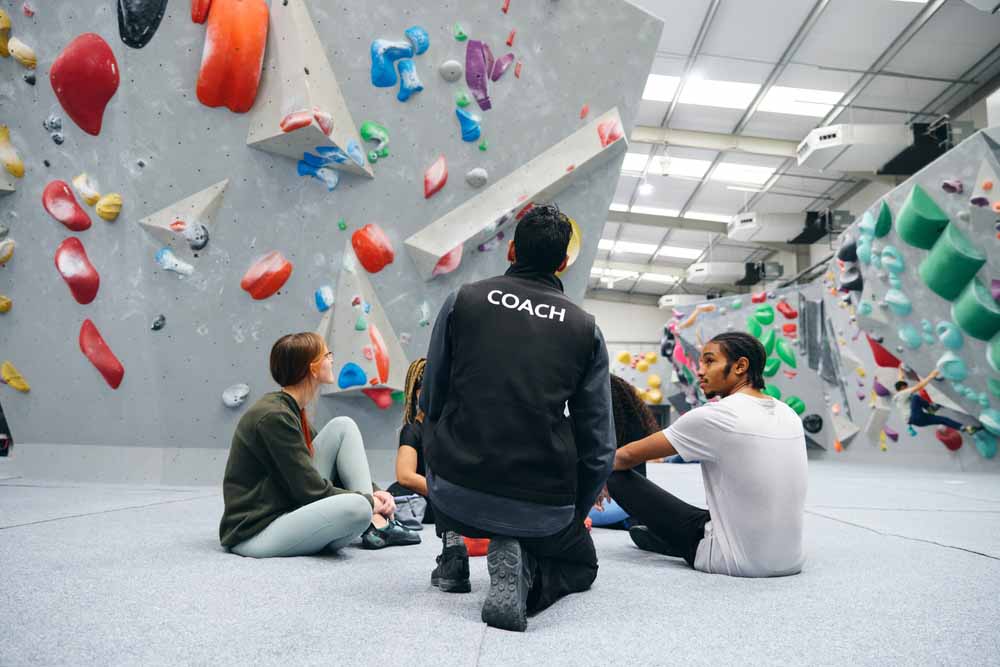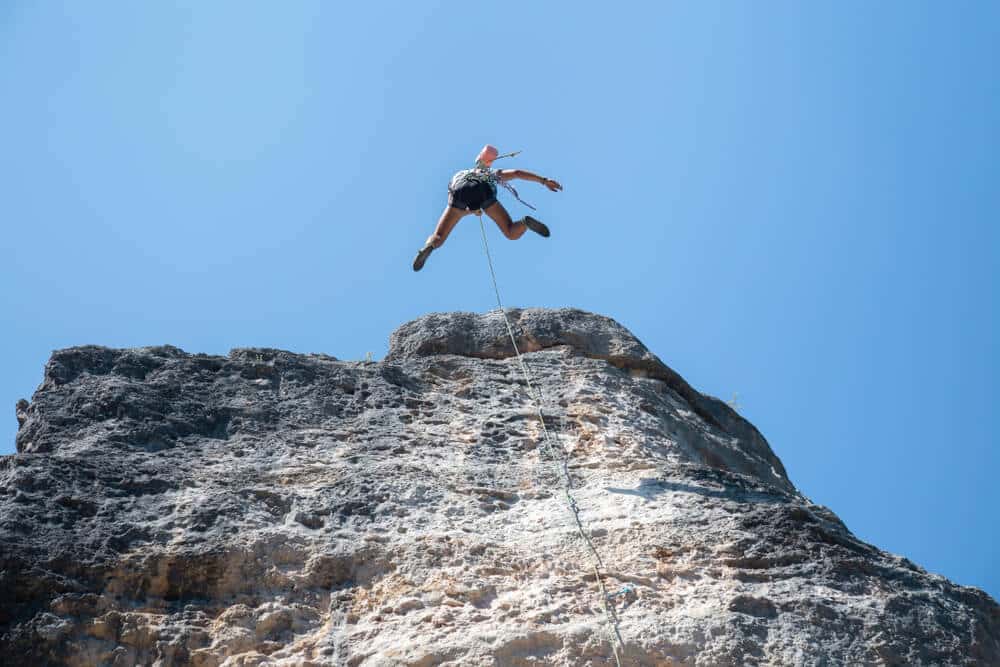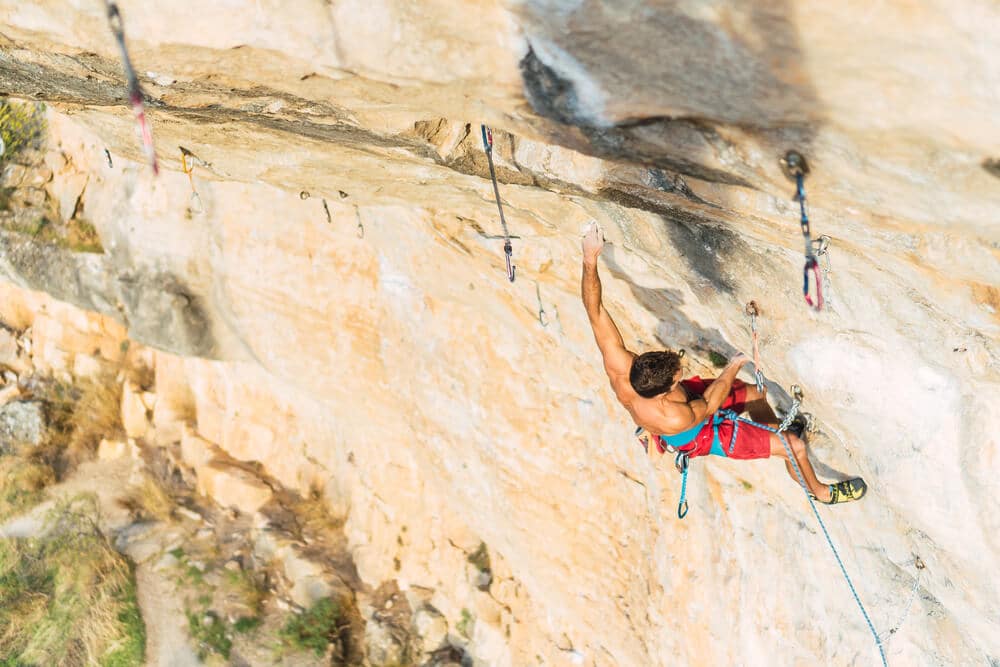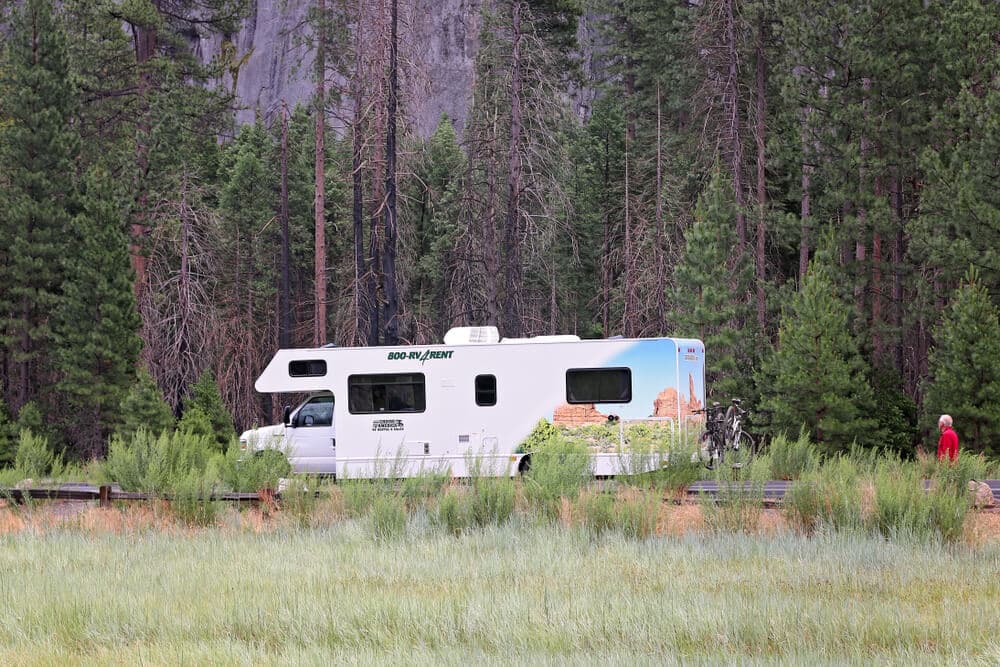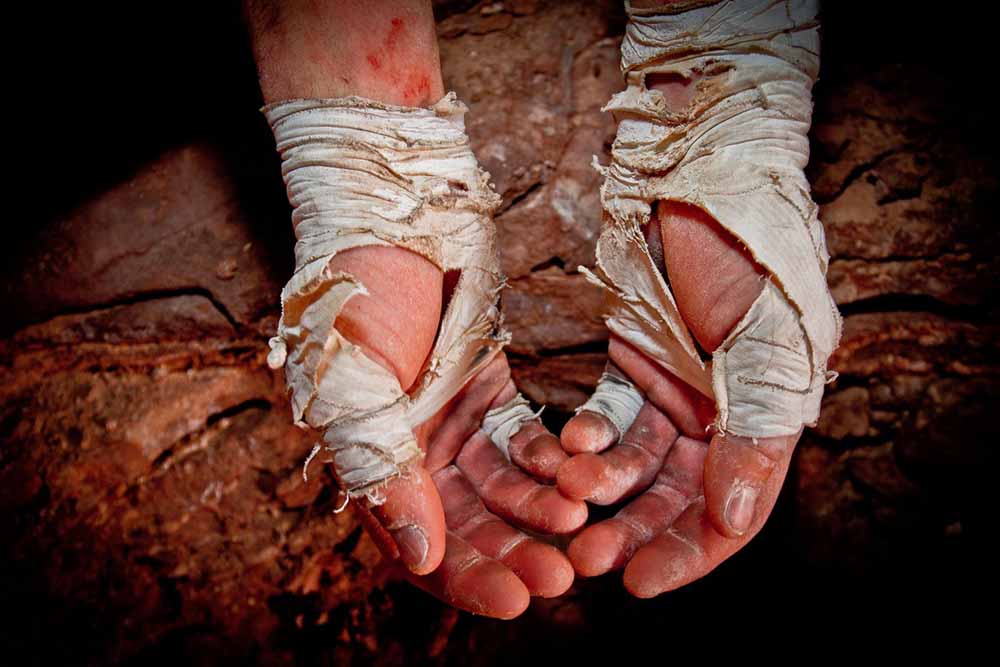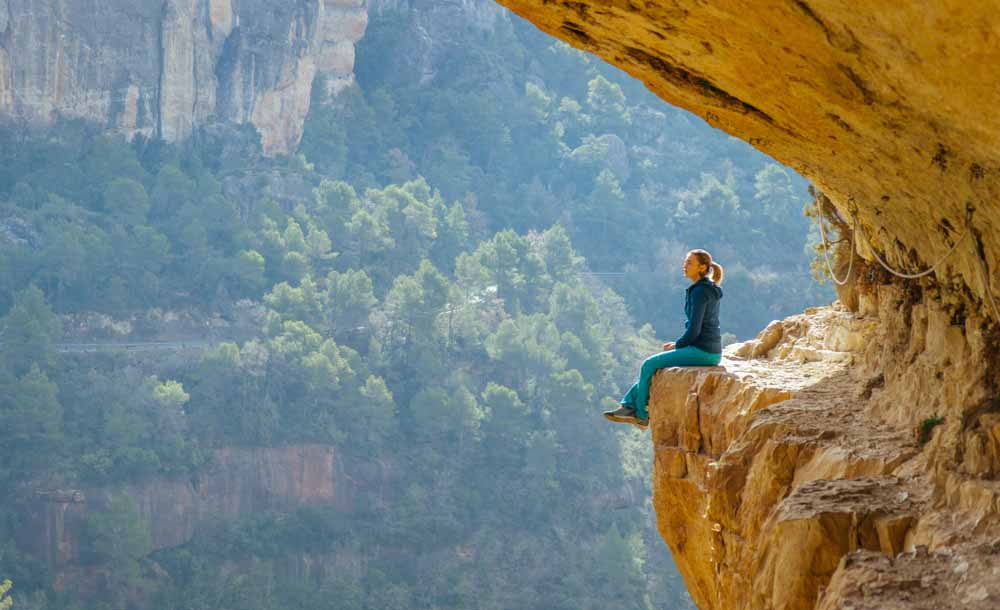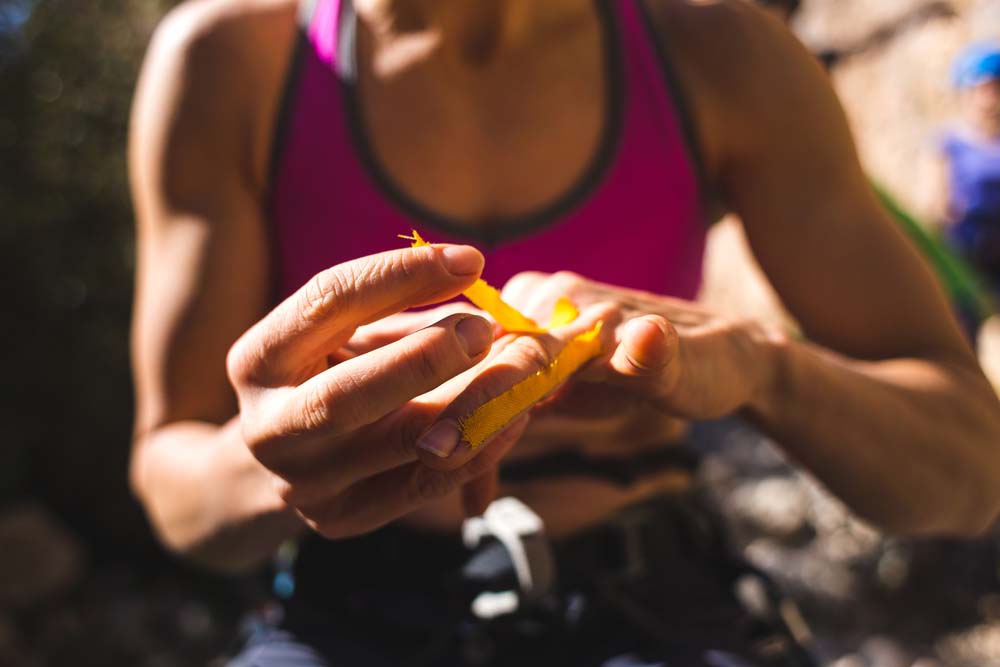When I began climbing 37 years ago, the only way in was through mentorship, climbing clubs, and how-to tomes like Mountaineering: The Freedom of the Hills. (I still have my fourth edition, printed on parchment paper and delivered by horse-and-buggy….)
I learned so many invaluable lessons from these sources, and I continue to learn from my friends and climbing partners, and from all our modern contact points with the sport like YouTube videos, Instagram posts, and sharing beta and tricks. That is the beauty of climbing: You can always be learning.
Still, the best lessons are the ones we also feel, assimilating them through lived experience. So while it makes sense to hear “To huck a dyno, drop your butt, intiate with your hips, and spring off your feet,” until you try the sequence yourself, those are just words.
Here, then, are 17 key teachings I’ve picked up over the years for you to apply firsthand to your own climbing.
1. There will be good days and bad days…
Some days are magical “low-gravity” days and some are frustrating “high-gravity” days. If you accept this inevitable ebb and flow, you will have a lot more fun. On a good day, tick as many goal climbs as you can; on a bad day, lower the bar, find new goals, and practice feeling gratitude that you get to climb at all.
2. …but there’s usually a reason for the bad days
That said, poor performance is rarely “random.” You’re probably sleep deprived, stressed (hence anxious on the wall), out of shape, overtrained, undernourished, or dehydrated, conditions are not in your favor, and/or you didn’t warm up properly. Some of these factors can be corrected and some can’t, but if you slow down and pay attention, you will find a root cause.
3. If you hit a difficulty plateau, hire a climbing coach
Whether they’re helping you identify weaknesses in your technique and/or coming up with a training plan, a good, observant coach will push you to the next level. I hired a coach in my late 40s and gained and maintained four letter grades, improvement that’s lasted into my 50s—no lie!
4. It’s not a competition
Climbing is not a competition with others, the rock, or even yourself, so let it go—let the team-sports jocks worry about all that. Done properly, climbing is a practice like yoga, a communion with the rock/wall and nature, and a celebration of being alive realized through kinesthetically pleasing movement. Focus on the moment and the movement—that’s all that exists.
5. Hangboarding is essential…
Maybe not in the first year, but as you move deeper into the sport and evolve your fingers and tendons, hangboarding becomes key. Buy one, mount it in your home, and research training programs—you can stay strong with a quick 20 minutes of focused boarding, even on days when you can’t get out.
6…and so are weightlifting and other crosstraining:
If you’re serious about getting better and about injury prevention, things like weights, yoga, walking/jogging, and so on are critical. Plus, you know, you can’t climb all the time—it’s good to have other hobbies, you monomanical weirdo!
7. Work on your fear of falling
It’s almost a cliché, but the fear of falling really is what holds most of us back. This is an ongoing practice that takes work, but effort here will let you try your absolute hardest on the wall and see major improvement as a result. The Rock Warrior’s Way is the place to start, and Hazel Findlay has some great teachings on this as well.
8. Wear the right shoes
There really is a right shoe for each type and angle of climbing—it’s not just marketing hype. I once saw a guy trying to use the stiff big-wall free-climbing shoe the TC Pro on the MoonBoard, a 40-degree-overhanging spray wall. Yes, Alex Honnold free-soloed El Capitan in TC Pros, but they were slipping right off the MoonBoard, where a softer, downturned shoe would have been more appropriate.
9. “Try-hard” is a muscle
It’s daunting to try our absolute hardest, and it’s not something we can do every time we shoe up—the emotional energy is exhausting. That said, it’s also a skill and a “muscle” we can develop, most often through limit bouldering, which teaches our mind, muscles, and nervous system how to redline.
10. Learn to rest
The great UK climber and rock-movement wizard Johnny Dawes once gave me an amazing pointer while we were bouldering on local Colorado sandstone. As I hung off a jug, trying to recover on a traverse, he said, “OK, now rest. Then rest again. And now rest some more,” each time encouraging me to further straighten my arms and slacken my grip until I was barely attached. The takeway? At a rest stance, hang on with the minimum possible effort, sagging down and letting your bones and joints—not your muscles—take the weight.
11. Take that road trip
If the opportunity comes up to travel to a new climbing area, take it, even if you have local projects. New routes, new rock types, and new climbing scenes expand your repertoire as a climber, building out your skill set and overall perspective. Plus, it’s just fun to hit up fresh climbs, and you’ll come home more psyched than ever for the local goods!
12. Be intentional with rest days
Schedule rest days like you would climbing days, to encourage recovery. Honestly, I’ve never had much luck climbing more than two days in a row, though some freaks seem to be able to climb three days on or more—or so they claim. In any case, build in two to three rest days per week and be active: move your body with a walk, light jog, yoga, or stretching, to encourage blood flow and help sore muscles recover.
13. Know thy skin
We all have different skin types, from moist, sweaty, and “glommy” to dry, slippery, and callus prone—and this can vary by season. Know your skin and care for it with tools like sanding boards to file down calluses, nail clippers to snip away flaps, Neosporin to pack into splits, and whatever salve or balm suits you best. Once you’re done climbing, wash your hands thoroughly to remove chalk residue, and remoisturize as needed.
14. Minimize resetting on handholds
If you watch videos of the top climbers, they rarely reset on the handholds, taking them as they grab them and quickly moving on. Some of this comes from having practiced the routes and knowing each hold’s nuances, but much is simple strategy—the longer you fuss about on poor holds, the quicker you fatigue. At the gym, to build this skill, practice the “sticky hands” drill, in which you must move off a hold the first way you grab it. (You can also play “sticky feet.”)
15. If you’re getting frustated on a climb, come down and go chill
Pretty much what it sounds like—don’t keep beating your head against the wall if a climb isn’t going well. Come down and go chill by yourself for at least 10 minutes, to give your mind, nervous system, and muscles a reset. Once you’ve cooled off, come back and try again.
16. Climb with different partners of different abilities
We all learn from each other on the wall. Stronger, bolder, and/or more experienced partners can be great mentors and inspire us to climb our best, while partners who don’t climb as hard provide a great opportunity to be mentors ourselves, conceptualizing and teaching aspects of the sport in ways that others can grasp.
17. Don’t be in a hurry to improve
Some people are genetic freaks and rise through the grades with frightening rapidity, but most of us will benefit from slow, steady improvement that gives our ligaments, muscles, and tendons time to adapt. You’re going to have a long climbing career, so don’t be so eager to level up that you incur lasting injuries. I still have tweak-prone middle fingers from pushing too hard on small holds in my teenage years, never really thinking those same fingers might be touchy 30-plus years later!



